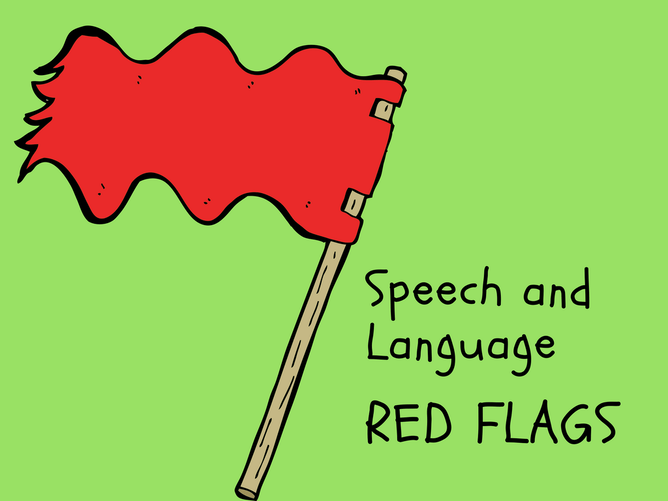Speech And Language Red Flags
How do I tell if my child’s speech and language is delayed? Should my child be talking yet? My child’s friends are all putting words together, why isn’t s/he? Why doesn’t my child follow directions? Is my child’s speech normal? Why are others having difficulty understanding his/her wants and needs?
Have you ever asked yourself these questions or questions like these? If so, you’re not alone. Communication development is complex and it’s not always easy to evaluate, especially if you haven’t been formally trained in speech and language!
We regularly hear about the importance of early intervention, and for good reason! Early intervention has been proven to have a considerable impact on treatment outcomes. Now that’s great to know, but often parents aren’t sure about what communication milestones their children should reach at certain ages and also what potential red flags to look out for. Below is a list of red flags arranged by age for your reference.
By 12 months
- doesn’t babble with changes in tone – e.g. dadadadadadadadada
- doesn’t use gestures like waving “bye bye” or shaking head for “no”
- doesn’t respond to her/his name
- doesn’t communicate in some way when s/he needs help with something
- doesn’t understand words used in your everyday interactions (e.g. cup)
By 15 months
- doesn't understand and respond to words like "no" and "up"
- says no words
- doesn't point to objects or pictures when asked “Where’s the...?
- doesn’t point to things of interest as if to say “Look at that!” and then look right at you
By 18 months
- doesn’t understand simple commands like "Don't touch"
- isn’t using at least 20 single words like "Mommy" or "up"
- doesn’t respond with a word or gesture to a question such as “What’s that? or “Where’s your shoe?”
- can’t point to two or three major body parts such as head, nose, eyes, feet
By 24 months
- says fewer than 100 words
- isn’t consistently joining two words together like "Daddy go" or “shoes on”
- doesn’t imitate actions or words
- doesn’t pretend with toys, such as feeding doll or making toy man drive toy car
- isn’t using a range of speech sounds (e.g. p, b, m, t, d, n, h, w)
By 30 months
- says fewer than 300 words
- isn’t using action words like “run”, “eat”, “fall”
- isn’t using some adult grammar, such as “two babies” and “doggie sleeping”
3-4 years
- doesn’t ask questions by 3 years
- isn’t using sentences (e.g., "I don't want that" or "My truck is broken”) by three years
- isn’t able to tell a simple story by four or five years
- isn’t using the following speech sounds –
- 3 years: zh, y, h, w, ng, m, n, p, k, t, b, g, d.
- 3 years and 6 months: the above-mentioned speech sounds + ‘f’
- 4 years: the above-mentioned speech sounds + ‘l’, ‘sh’ and ‘ch’
Sourced from The Hanen Centre and Speech-Language-Therapy.com
The first step is MONITOR your child. Make a point of regularly spending time communicating with your child and really take note of the way your child communicates with you and others.
Step two… Know the red flags that correspond with your child’s age. The more familiar you are with red flags, the more likely you are to notice them with your young one.
If you notice that your child has any of the red flags above, it is best to be proactive and seek help from a speech-language pathologist. The earlier your child begins treatment, the better the chance of reaching desired outcomes. If you have any concerns, don’t hesitate and speak with a speech language pathologist today.

